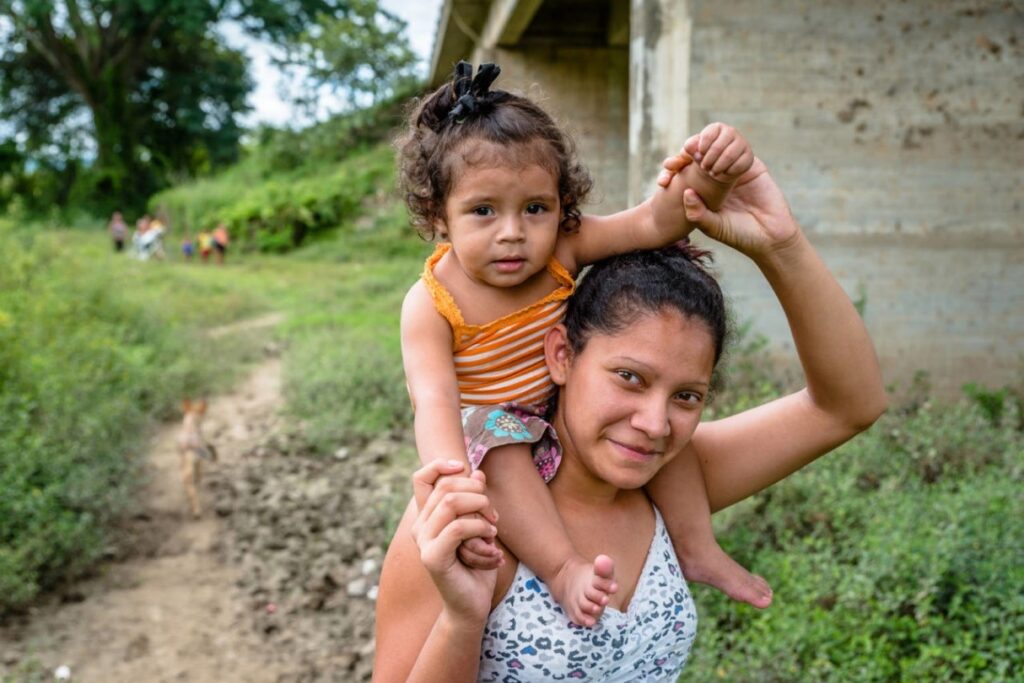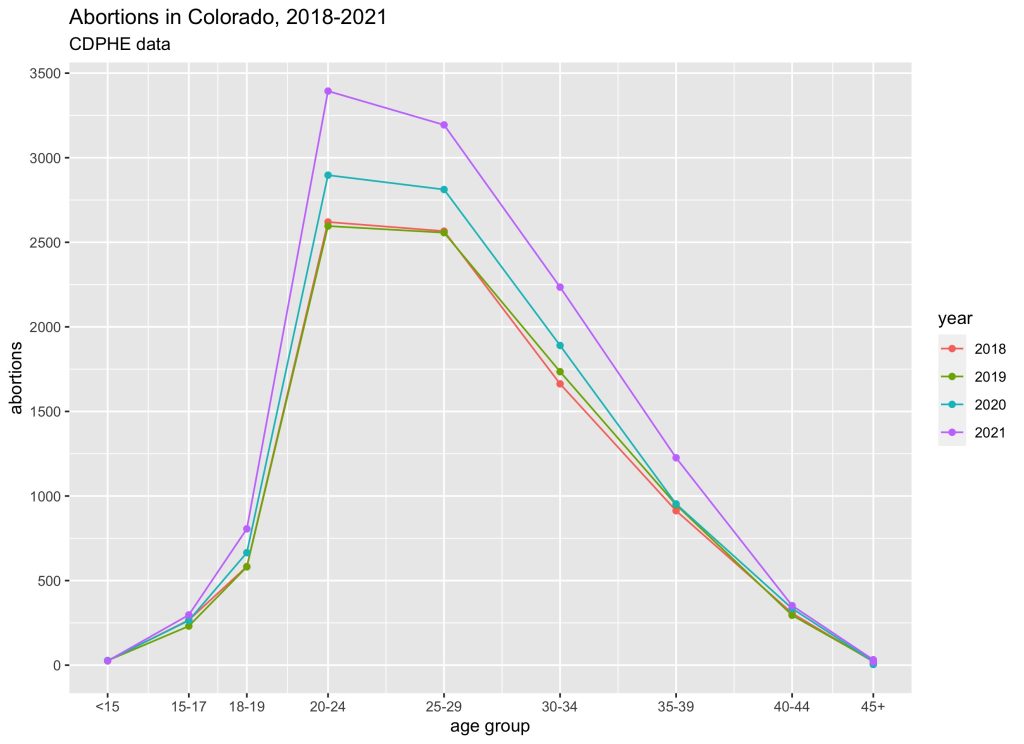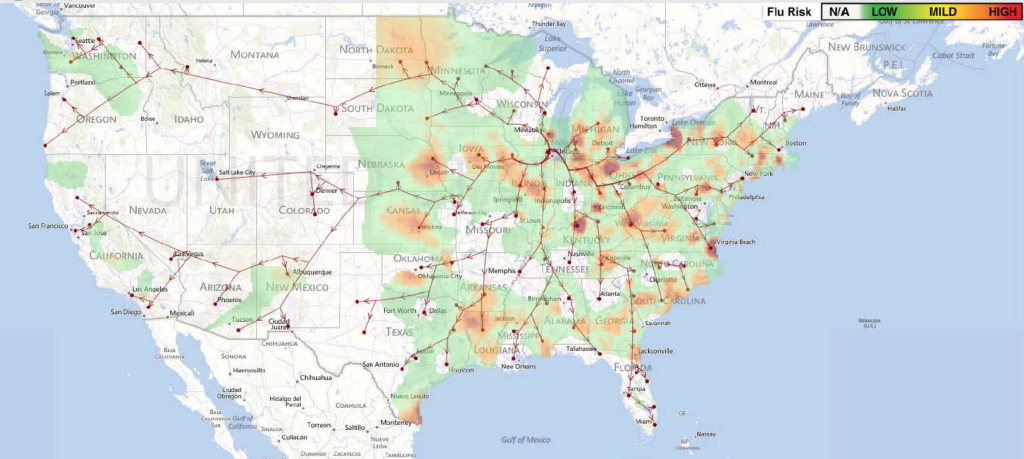Each year, CUPC awards pilot grants to faculty affiliates. These SEED grants are supported by the center’s NICHD grant, in hopes that the projects will blossom into an externally-sponsored proposal. Funds may be used to extend current research, assist in moving into new areas, and/or build partnerships. This year’s showcase features 4 dynamic pilot projects – all thriving in cutting-edge population research! Take a look:
Toxic Homes? A mixed-methods study of Marshall Fire health impacts
Co-PIs: Colleen Reid and Jessica Finlay

“Since moving recently to Boulder, fires have become an everyday part of my family’s life. We check for
fire risk and poor air quality before hiking, watched a plume of wildfire smoke curl over the mountain
ridge from our backyard, and hear from neighbors about the Marshall Fire that raced across Superior,
Louisville, and Boulder County on December 30, 2021. It is exciting to pursue timely research that is
important to my local community and gain preliminary insights to inform future national-scale research
on hazards and health across the life course,” explains Dr. Finlay.
Led by Co-PIs Dr. Colleen Reid and Dr. Jessica Finlay, this project examines the health impacts of a
wildland urban interface (WUI) fire that mostly burns human-made materials by combining a mixed-
methods approach on the multifaceted health impacts of the Marshall Fire. By combining quantitative
and qualitative methods, they hope to understand the subjective experience and perceived physical,
mental, and social health impacts of community members whose homes were significantly smoke
damaged or destroyed by the Marshall Fire.
Further, this project kickstarts a new collaboration between Dr. Reid and Dr. Finlay, which deepens
mixed-methods research at CUPC and will lead to external grant opportunities.
Dynamics of climate change impacts in Kenya: Extending a panel survey to multiple livelihood, population, migration, and ethnic contexts
Co-PIs: John O’Loughlin, Terry McCabe, and Sarah Posner

The subject of the effects of climate change in the Global South continues to gain both public and
academic interest as the consequences become more pressing, as highlighted in the United Nations
recent Intergovernmental Panel on Climate Change (IPCC) 6th Assessment 2022 report. Among these impacts are expected decreased food availability, deteriorating health conditions, population pressure on agricultural resources, and greater competition for political gains. Less examined are developments that lead to forced migration for work or shelter, or to support for and engagement in conflict.
Since 2020, Dr. John O’Loughlin, Dr. J. Terrence McCabe, and Geography PhD student Sarah Posner have been conducting research in ethnically diverse communities around and within the town of Isiolo in
north-central Kenya. The focus of their research is to examine how climate and climate change impacts
livelihoods (pastoralism, ago-pastoralism, agriculture, and urban employment), food security, migration,
and conflict. The methodology included qualitative discussions and interviews, with an in-depth contact
household survey and three subsequent waves of cell phone-based household interviews conducted.
“For the funds provided by CUPC/IBS, we will conduct a pilot project that will scale up the research to
include communities across Kenya that will address the need for a ‘sustained effort at data collection
over multiple years through panel surveys supplemented by qualitative interviews and detailed ecological/climatic data in diverse environmental and social contexts’,” Dr. McCabe explains. With this extension, they will be able to address some uncertainties when assessing the impacts of climate change on communities in poor countries.
Understanding Disparities in Nicotine and Cannabis Vaping among Youth
PI: Christine Steeger

“Research shows that certain youth populations might be particularly vulnerable to using more e-cigarettes or cannabis. Identifying patterns of use for different youth subgroups is an important first step to inform strategies for reducing vaping disparities and subsequent health disparities. The CUPC SEED grant funding will help determine current use rates and characteristics of nicotine and cannabis vaping products across youth subgroups located in Colorado and Ohio,” shares Dr. Steeger. She also points out that “youth in Colorado have some of the highest vaping rates in the U.S.”
Recent national data indicate a rapid increase in adolescent vaping of both nicotine and cannabis over the last decade, with the average lifetime rates for vaping reaching 41% and 39% respectively among 10th and 12th grade students by 2020. Led by PI Dr. Christine Steeger, this project examines differences in the use of nicotine and cannabis vaping across race and ethnicity, gender, sexual orientation, socioeconomic status, and urban/rural setting, including vulnerable youth populations. Christine’s research will study the disparities across social and demographic statuses, allowing for intersectionalities among characteristics and also for non-binary responses to questions related to race, ethnicity, gender, or sexual identity; this, in turn, will provide more detailed information about vaping patterns across different groups of youth. The results from this study will be important in informing regulatory policy and targeted interventions or marketing campaigns for reducing teen vaping, and will provide a “Preliminary Studies” section for a larger NIH R01 proposal that will examine vaping disparities more fully, including addiction and health consequences.
Sustaining Improvements in Health Service Delivery and Health under Decentralization Reform: Current and Future Collaborative Research in Honduras
Co-PIs: Krister Andersson, Alan Zarychta, and Jane Menken

An interdisciplinary team of scholars across the United States, led by Co-PIs Drs. Jane Menken, Krister Andersson, and Alan Zarychta (University of Chicago) has collaborated for the past decade in studying the impact of the decentralization of health services in Honduras early in the 21st century. Decentralization occurred at the county level over the course of a decade but was never fully completed due to a change in government. This provides the team with the opportunity to compare service and health outcomes between centralized and decentralized counties, which allows them to then determine whether the policy indeed benefitted women and children, who are the policy’s intended beneficiaries.
With the funds provided by the SEED grant, the team will come together for a three-day workshop at IBS with the goal of completing a full draft of the flagship paper and framing and outlining a follow-up project on the impact of healthcare decentralization in developing country settings.
– Paige Schoonover
(CUPC Graduate Research Assistant / ECON PhD student)
CUPC also awarded pilot grants to fund 7 projects in Fall 2022! See those projects below.
Environmental Extremes and Rural Health
PI: Lori Hunter

Led by PI Dr. Lori Hunter and co-PI Doctoral candidate Catherine Talbot, this project examines climate‐related health impacts on rural residents and the variation in vulnerabilities across the life course using large data sets, including from the National Health Interview Survey (NHIS), Federal Emergency Management System (FEMA) Disaster Declaration Summaries, and Spatial Hazards Events and Losses Database (SHELDUS). The intersections between climate and health in rural communities across the United States are fundamental to rural well-being, especially as resilience to disasters in rural communities is lower, in part due to challenges associated with health care availability and access and where the elderly population is higher and rates of chronic disease and obesity is higher. However, research on climate-related health impacts is often focused on urban communities. Therefore, Hunter and Talbot are addressing a critical need in understanding how extreme events affect health outcomes for rural residents by conducting the first nationwide study focused on health impacts across the life course of extreme events with special attention to rural health. The insights from their research will be necessary for the development of policies responsive to the intensifying climate challenge and the specificities of rural life, providing place-appropriate policy for rural communities.
In demonstrating the importance and timeliness of this research, Dr. Hunter shares, “News continues to emerge of the relatively greater impacts of Hurricane Ian on Florida’s elderly. The CUPC SEED funding laid critical foundation for investigation of this association between age and vulnerability to extreme events. The resulting preliminary findings have supported an NIH proposal outlining an expanded investigation making use of data from the Rocky Mountain Research Data Center (RMRDC) at IBS to “drill down” to more precise levels of geography and more detailed measures of health.”
– Emma Galofré García
(CUPC Graduate Research Assistant / ENVS PhD student)
Quantifying the Impact of Abortion Restrictions in Colorado
PI: Leslie Root

In April of this year, amid a flurry of states enacting abortion bans after the Supreme Court’s ruling overturning Roe v. Wade, Colorado passed the Reproductive Health Equity Act (RHEA), protecting access to abortion care in Colorado. However, the state still maintains two of the most common abortion restrictions in the U.S., parental involvement laws and Medicaid funding bans, both of which are known to reduce access to abortion. These restrictions are the focus of PI Postdoc Research Associate Leslie Root and co-investigators Amanda Stevenson and Kate Coleman-Minahan’s project to assess the impacts of these restrictions on abortion access across Colorado, the impact of which has yet to be assessed.
“Colorado is a state with relatively strong abortion protections, and sometimes this leads to an assumption that there’s no need for improved abortion access. Work that helps us understand the abortion access barriers that Coloradans still face, and the inequalities they generate, is important to creating equitable, evidence-based health policy,” shares Dr. Root.
One major aim of this study is to develop indirect methods for estimating the impacts of state-level abortion funding restrictions. Available data is often incomplete, piecemeal, and/or inconsistent; however exciting new data collection efforts by the Society of Family Planning in conjunction with Root, Stevenson, and Coleman-Minahan’s ability to leverage their longstanding connections to the Colorado abortion provider community will allow the team to quickly estimate and disseminate their findings.
There is a great deal of need for basic demographic work on abortion and simple but powerful insights from demography research, such as this, have the potential to provide high-impact, rigorous evidence to abortion debates while also advancing the mission of the Population Dynamics Branch (PDB) of the National Institutes of Health (NIH).
– Emma Galofré García
Development of a Multi-Dimensional Measure of Neighborhood Socioeconomic Composition and Implications for Population Health Disparities
PI: Adam Lippert

“I was drawn to this project because the association between education and income may be splintering. The economic returns of a college degree have become more variable among degree holders over time, and combined with rising student loan debt, these two foundational elements of socioeconomic status may have an unsteady relationship across space,” explains CU Denver affiliate Adam Lippert, reflected in his more focused Denver neighborhood map above.
Adam’s SEED project explores the multiple levels between income, education, wealth, and occupational characteristics and how they all coalesce differently across US neighborhoods, which in turn impacts population health. Thanks to recent advancements in machine learning techniques, Adam is able to open the possibility of identifying common combinations of many community features to develop a multidimensional measure of the neighborhood socioeconomic environment (NSE). By using a highly innovative and methodologically rigorous approach, his study is capable of examining how neighborhoods influence health, in addition to personal attributes and risks. For instance, using advanced clustering techniques and data from three main sources: the National Longitudinal Study of Adolescent to Adult Health (Add Health), the National Health and Nutrition Examination Survey (NHANES), and American Community Survey (ACS), his study can identify groups sharing similar response patterns across a number of observable variables – for example, an ecological study can assess inter-neighborhood variations in the presence of a range of health risks amenities including food availability and affordability, neighborhood walkability, and the density of alcohol and tobacco retailers.
Further analysis from this project hints that recent trends may show a decoupling of socioeconomic indicators, evidenced by the declining and increasingly variable economic returns from a college degree, the dramatic rise in housing valuations in low- and high-income neighborhoods alike, and rising wages in some unskilled occupations marked by worker shortages.
– Anni Magyary
Understanding Social Dynamics with Location-Based Social Media
PI: Guofeng Cao
Social media platforms constantly attract large numbers of users for everyday social networking and content sharing. This, in turn, has rendered them into a reliable proxy to investigate the dynamics of the real-world socioeconomic environment. Social media data offer a timely and cost-effective alternative to conventional survey-based approaches at high spatial and temporal resolutions, and thus are used “to study various aspects of human behavioral sciences across multiple geographic scales” by scientists from different domains, from political science to sociology.
In spite of such huge potential, “the characteristics of social media data, particularly the data veracity (e.g., representative bias and uncertainty) and unstructured formats, hinder us from fully taking advantage of this novel data source”, explains Dr. Guofeng Cao. To address this issue, Dr. Cao’s project aims to develop a framework for systematic analysis of social media data to understand their underlying geographic and social dynamic characteristics at multiple scales, and to facilitate integrating this data into the practices of social science research.

Leveraging a geo-tagged Twitter data feed that has been collected since early 2011, Dr. Cao’s SEED project proposes the following steps to fulfill the goal stated above:
- Modeling the geographic bias and uncertainty of social media data at different geographic scales by comparing them to survey-based data sources (e.g., the survey results from U.S. Census Bureau)
- Integrating social media data with census-based data sources to explore the potential of social media data in refining the spatiotemporal scales of survey-based geospatial data
- Understanding public opinions on climate change on Twitter (e.g., concerned and dismissive audiences about climate change) and comparing it with the Climate Change in the American Mind’s (CCAM) official report
– Behzad Vahedi
(CUPC Graduate Research Assistant / GEOG PhD student)

Understanding the Effects of Swiftly Changing Abortion Access: The voice of Texas social service providers
PI: Katie Massey Combs
“I think social service providers have largely remained left out of the equation,” comments Research Associate Katie Massey Combs on her observation from the recent changes in abortion policies and laws in the United States. “I believe we will miss the folks who are most affected by these policy changes if we do not engage with social service providers on the front lines working in child welfare agencies, homeless shelters, etc.” Katie’s research has shown that social service providers play a critical role in linking people who have been historically marginalized to all kinds of services, including reproductive health care and abortion. “Social service providers are the first connection in gaining access to reproductive care, and with the reversal of Roe, there’s been a sudden shift in attention away from reproductive health care.”
With this SEED funding, Katie intends to explore how clients and social service providers, specifically in Texas, have been affected by the recent state legislation that passed and became law, which bans access to abortion and reproductive healthcare for all Texas women. It also aims to understand how social service providers are navigating the current changes in abortion policy, what assistance is needed to support Texas social service providers, and what are the next steps for researchers to take in supporting social service providers in addressing clients’ reproductive health needs.
– Angela Branson
Life Expectancy Trends among U.S. States and Peer Countries, 1990-2020: Estimating the Impact of the 2020 COVID-19 Pandemic on Widening Differences
PI: Ryan Masters
Nearly 850,000 Americans have lost their lives to COVID-19, likely a conservative estimate of the pandemic’s overall death toll – and half of this loss of life occurred March-December 2020, prior to the availability of vaccines. Consequently, U.S. life expectancy declined by about two years. Eastern states experienced the brunt of the first wave, while summer waves disproportionately affected several states in the west and south. And while cases surged across the entire country by the time fall and winter hit, counts of high “excess” deaths among young ages helped cause this decline in U.S. life expectancy, while documenting poor U.S. health in midlife. Yet, the U.S. advantage over international mortality at older ages has eroded over time as well.

The primary goal of this project is to estimate 2020 and 2021 male and female life expectancy for each U.S. state, and to calculate the changes between 2019-2020 and 2020-2021. To generate life tables for each state in order to estimate differences in the mortality consequences of COVID-19, Ryan Master’s research will use novel methods and restricted access state-level vital statistics mortality data from the National Center for Health Statistics (NCHS).
The secondary goal of this project is to contrast the 2019-2020 and 2020-2021 life expectancy changes among U.S. states with respective changes among 20 other high-income peer countries. National-level mortality data for each peer country’s male and female population in 2019, 2020, and 2021 will be obtained via the Human Mortality Database (HMD) and HMD Short-Term Mortality Fluctuations data series. The team is especially interested in state and international differences in deaths at older ages given the unique vulnerability of this population to COVID-19 mortality, as well as in light of research suggesting that the advantage of U.S. old-age mortality relative to its peers is declining or has disappeared entirely.
– Anni Magyary

